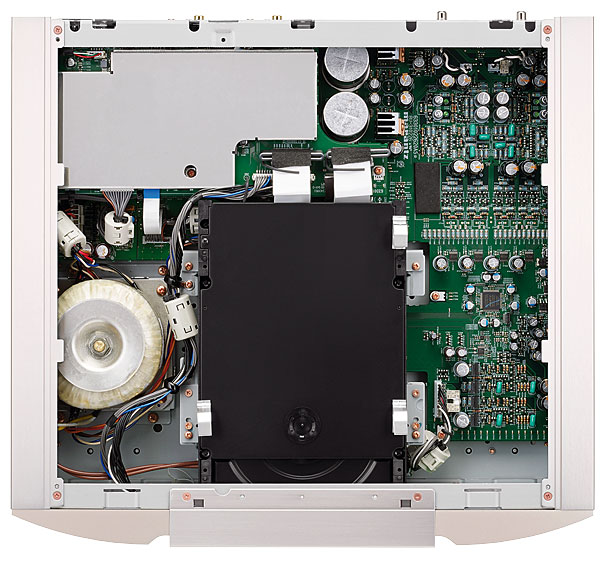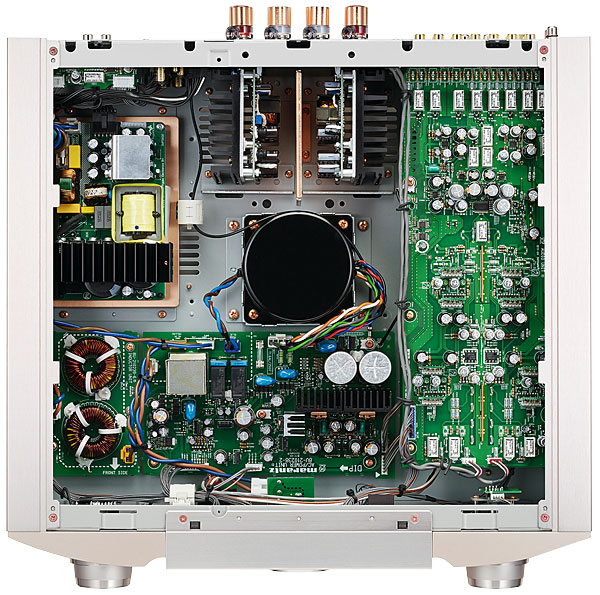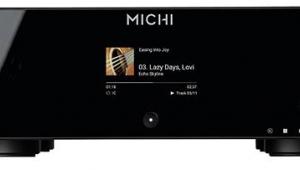Marantz SA-12SE/PM-12SE SACD Player/Amplifier Page 2
Furthermore, the amplifier can be reconfigured into 'bi-amp' mode, in which case the same mono input is output from both left and right channels. Used in what Marantz calls 'Floating Control Bus System' mode, up to four PM-12SEs can be connected together to power suitable loudspeakers. A headphone output is also provided, as are 'hidden' tone/trim (balance) controls. The latter are accessed via the 'Sound Mode' button on the remote handset supplied with both units, while a filter button allows the user to switch between the two digital filter options that are available on the SA-12SE SACD player.
![]() Guts 'n' Grip
Guts 'n' Grip
If all of the above has you thinking the SA-12SE/PM-12SE combination might sound just the teensiest bit like its KI Ruby counterparts, you wouldn't be wrong. Indeed, what this pairing delivers is very much the 'Marantz sound', complete with its focus on the music, imaging and performance – in other words, a highly involving presentation – along with the power and control to drive even demanding loudspeakers.
 While the balance is warm and rich, this isn't achieved at the expense of the openness of the midband or treble, meaning that while mainstream recordings with a rather brash edge are flattered almost to the point of listenability, the way this combination handles a good mastering job can prove extremely captivating.
While the balance is warm and rich, this isn't achieved at the expense of the openness of the midband or treble, meaning that while mainstream recordings with a rather brash edge are flattered almost to the point of listenability, the way this combination handles a good mastering job can prove extremely captivating.
What's more, the effect of the Marantz Musical Mastering chain within the player, allied to the guts and grip of the amp, goes a long way to closing the gap between music played on CD or in PCM through the digital outputs and the same content in DSD, either from a computer or straight off a disc. If the Filter 1 setting is a little too smooth for you, you can perk things up a little with the Filter 2 option, which I found helped a bit with dense orchestral recordings such as the classic du Pré/Barbirolli Elgar Cello Concerto [EMI CDC 7 47329 2], opening up the internal detail of the LSO and focusing the soloist rather better.
The same goes for Pink Floyd's 'Shine On You Crazy Diamond' [Wish You Were Here; EMI 7243 5 29071 2 0], with the somewhat shut-in later part of the piece gaining a bit more sparkle with the Filter 2 setting. The drums benefit from the big, rich punch of the Marantz pairing, and the soundstaging is opened up a bit. And the same track played from LP, albeit with a modest Rega record-playing front end, showed just how substantial, and yet fluid, that in-house phono stage sounds.
That held true with one of my favourite vinyl recordings, Britten's Peter Grimes [Decca SXL 2150-2]. While a little noisy from repeated playing, the full-blooded sound from the three-disc box set put up a pretty strong showing via the phono stage, even against the much later 96kHz/24-bit digital release.

Deft Touch
The beauty of the 'Marantz sound' – and this is as true when you slot the amp or player into another system as it is when the two are used together – is that it manages to deliver so much of what's on the recording without ever sounding forced, processed or artificial. Yes, there undeniably is a Marantz sound, perhaps most noticeable in that generous, warm, speaker-flattering bass but also in the rendition of detail across the entire frequency range. It's all about control and restraint, both in the player and amp themselves and the way the latter grips and drives loudspeakers. But all this is achieved without giving the listener any overt signs of what's going on. Instead, the focus is always on the music, and the sense that more of the recording is being revealed.
Whether it's a clever sleight of hand, or just an awareness of how many listeners want their music to sound – that mixture of 'artists in the room' and a sense of massive power delivered with a deft touch – it's hard not to argue that Marantz has got this presentation down to a fine art. While both the SA-12SE and PM-12SE are some way above the mass market, and well into that territory where consumers might be thinking of more esoteric brands, and maybe even of separate DACs or pre/power amplifiers, there's no denying that these new arrivals are fuss-free and easy to use.

Furthermore, they look the business in their choice of black or 'silver gold', and are very unlikely to leave their buyers feeling shortchanged. In other words, they're very typically Marantz, and none the worse for that.
Hi-Fi News Verdict
Tried and tested components, plus the familiar sound quality: this may not be the most adventurous move Marantz has made in its near-70-year history, but there's nothing wrong in giving the customer what you think they want. And with their rich yet detailed presentation, effortless musicality and beautiful build quality, these Series 12 Special Edition models remain a very attractive buy.























































